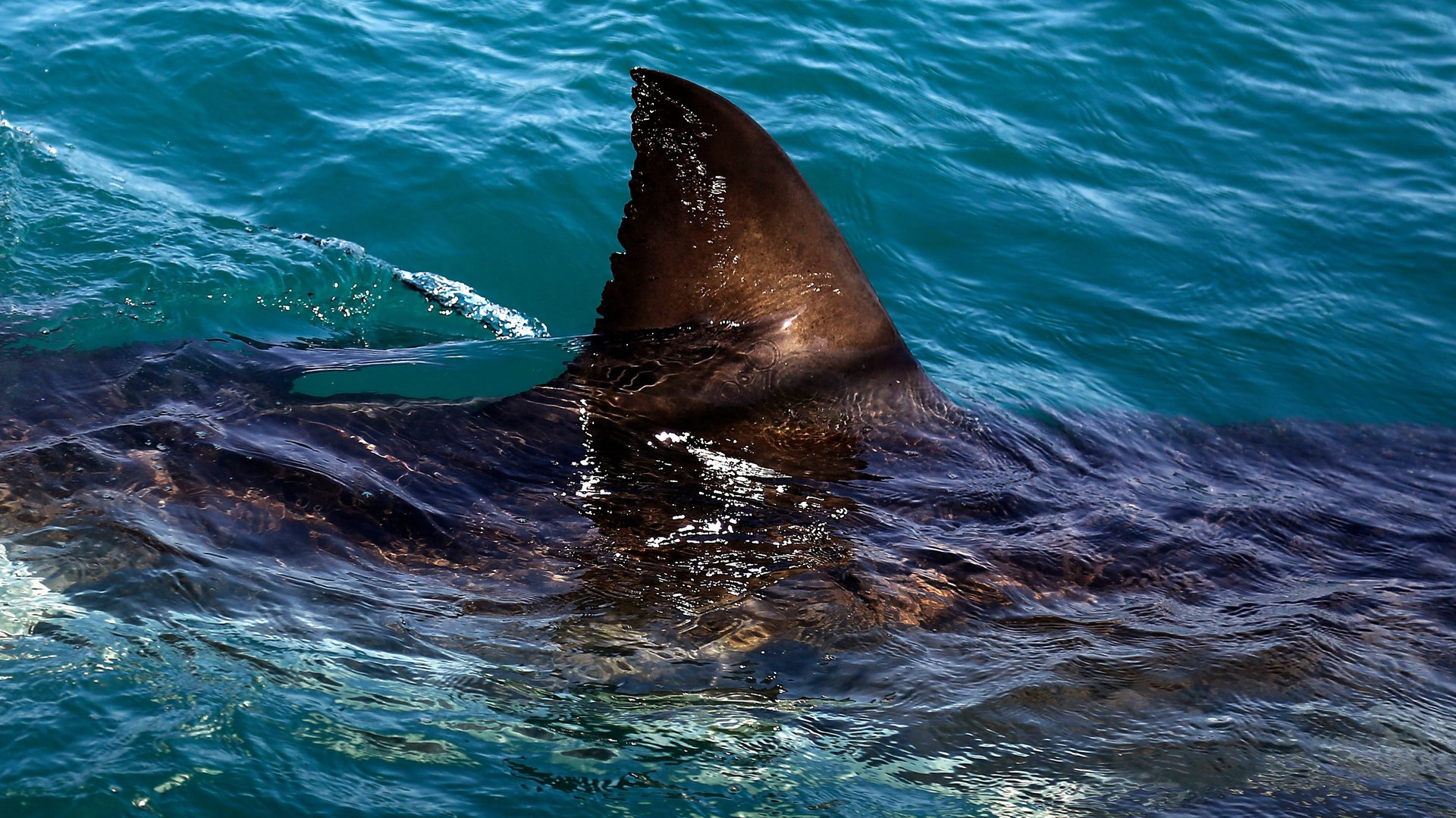What to do if you see a shark at the beach this summer
Happy Shark Week! Let’s start by clarifying that you are highly unlikely to encounter a shark anywhere other than your TV.


Happy Shark Week! Let’s start by clarifying that you are highly unlikely to encounter a shark anywhere other than your TV.
That said, the carnivorous—and environmentally vulnerable—fish do live in the ocean. If you enjoy spending time in the water, like I do, you just may run into one. Earlier this week, two kids were bitten by sharks off beaches at Fire Island, New York (they’re OK!) and a great white shark estimated to be a cool 17-19 feet (about 5 meters) long was spotted near the pier in San Clemente, California.
White shark populations are on the rise, thanks to conservation efforts and improved water quality, as Chris Lowe, director of the Cal State Long Beach Shark Lab, told Quartz’s Erik Olsen in 2017. And the Santa Monica Bay, here in southern California, is a nursery for them. (As opposed to a café, which is different.)
The truth about sharks is they just aren’t that into us. “We clearly know they’re not interested in people, because places like Santa Monica Bay or Waikiki Beach would be a Costco for sharks,” said Lowe. Instead, he explained, despite the historical proliferation of sharks in heavily populated areas there’s a relatively low incidence of attacks.
And while we still don’t know exactly why sharks bite humans—it’s part of what Lowe’s research seeks to discover—there are still ways to stay safer in the water.
If you see any sharks, stay on the shore
You’d think this could go without saying, but don’t do it, even for the ‘gram.
Ditto for a dead whale
“One of the things we do know is if there’s a dead whale washing into the beach you probably shouldn’t be surfing by that,” said Lowe.
The white shark spotted in San Clemente earlier this week was snacking on a whale carcass. If a dead whale, fishermen’s chum, or any other bloody mess is visible in water, don’t go in.
Also, river mouths
River mouths can also wash potential shark-attracting food and waste into the sea, and are known habitats for bull sharks, which can survive in both fresh and saltwater.
Instead, opt for clear water and busy beaches
Poor visibility can result in cases of mistaken identity (eg, a shark mistaking a surfer for a seal), and Lowe said incidents are rarer at more popular beaches than they are in remote locations.
But if you do see one
Do not thrash, which can make you look like prey, and move toward shore while trying to keep the shark within your sight.
If—and again, this is a very unlikely scenario—a shark should get its mouth around you, this is not the time to play dead. Instead, do like pro surfer Mick Fanning and fight back, punching or kicking its eyes or gills if you can.
Fanning “did everything right,” Greg Skomal, a shark scientist with the Massachusetts Division of Marine Fisheries, told National Geographic. “It looked like he put the board between him and the shark,” said Skomal. “He avoided the mouth, he struck the shark, and then moved away.”
You’ve got more important things to worry about than sharks
Seriously, wear sunscreen (without oxybenzone). And watch out for flying umbrellas.